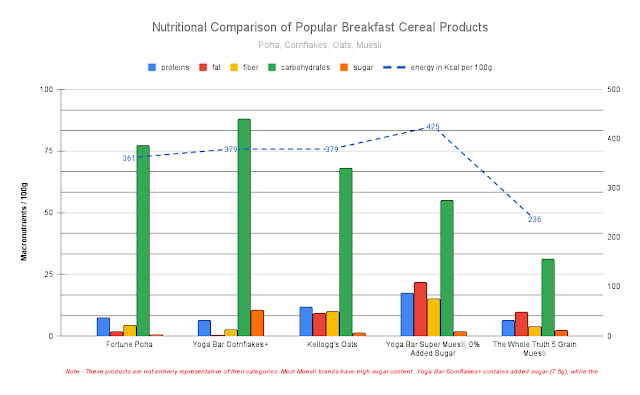Dietary Guidelines for Indians - 2024 Revision
The National Institute of Nutrition (NIN), part of the Indian Council of Medical Research, has released revised Dietary Guidelines for Indians. The last such report was issued in 2011.
Links - PDF (May 2024, 148 pages), online copy
These 17 guidelines offer science-based recommendations for healthy living across all age groups -
- Eat a variety of foods to ensure a balanced diet
- Ensure provision of extra food and healthcare during pregnancy and lactation
- Ensure exclusive breastfeeding for the first six months and continue breastfeeding till two years and beyond
- Start feeding homemade semi-solid complementary foods to the infant soon after six months of age
- Ensure adequate and appropriate diets for children and adolescents both in health and sickness
- Eat plenty of vegetables and legumes
- Use oils/fats in moderation; choose a variety of oil seeds, nuts, nutricereals and legumes to meet daily needs of fats and essential fatty acids (EFA)
- Obtain good quality proteins and essential amino acids (EAA) through appropriate combination of foods and avoid protein supplements to build muscle mass
- Adopt a healthy lifestyle to prevent abdominal obesity, overweight and overall obesity
- Be physically active and exercise regularly to maintain good health
- Restrict salt intake
- Consume safe and clean foods
- Adopt appropriate pre-cooking and cooking methods
- Drink adequate quantity of water
- Minimize the consumption of high fat, sugar, salt (HFSS) and ultra-processed foods (UPFs)
- Include nutrient-rich foods in the diets of the elderly for health and wellness
- Read information on food labels to make informed and healthy food choices
Stressing that over 56.4% percent of the total disease burden in India is due to unhealthy diets, the report highlights that healthy diets and physical activity can reduce a substantial proportion of coronary heart disease (CHD) and hypertension (HTN) and prevent upto 80% of Type 2 diabetes.



Comments
Post a Comment